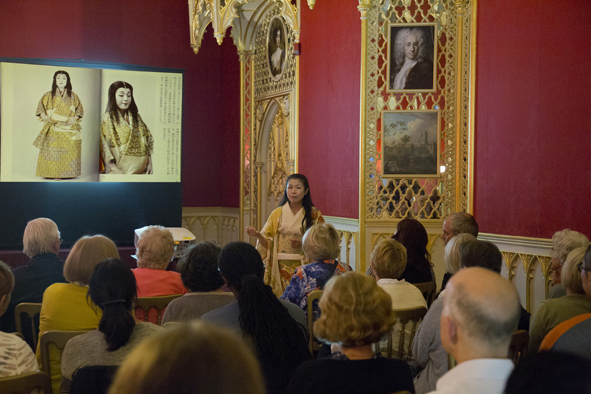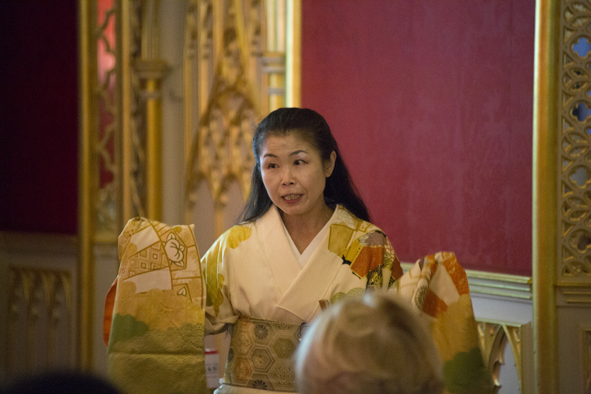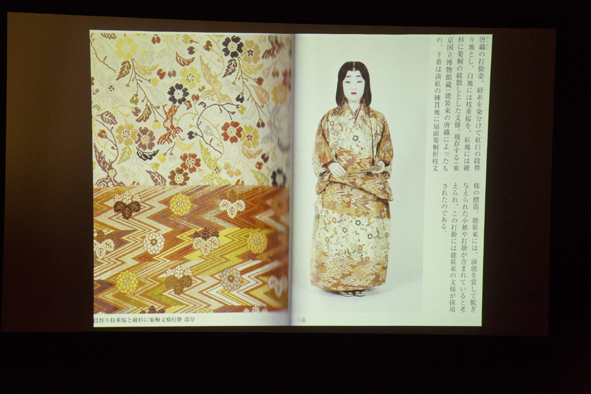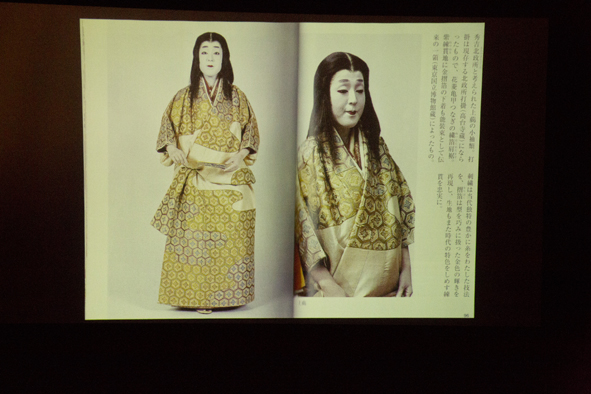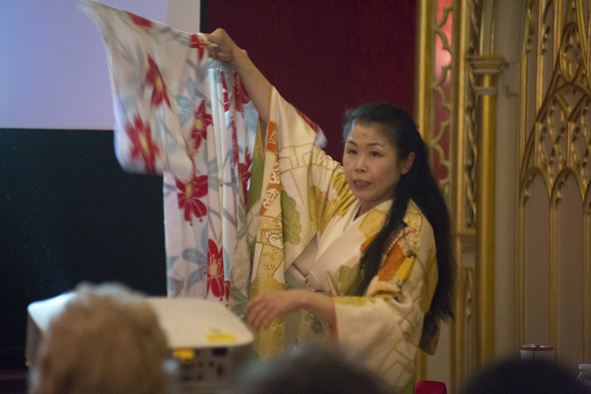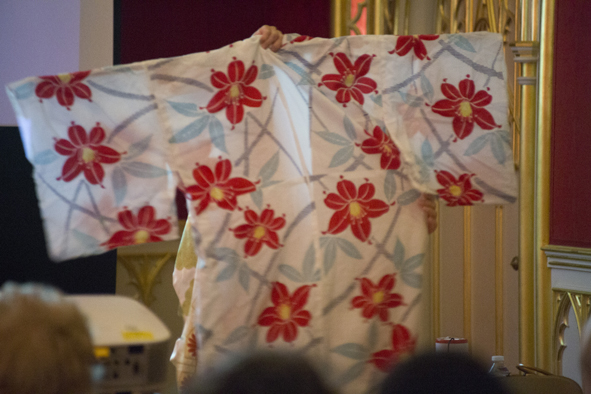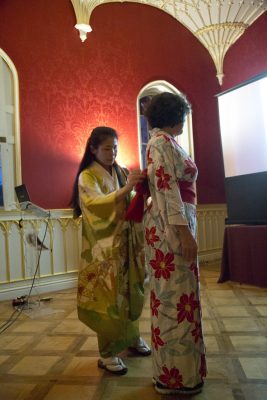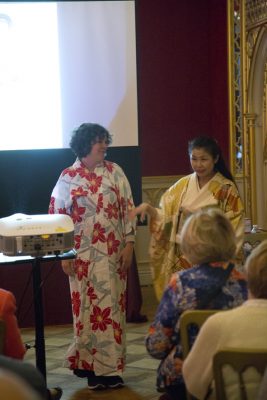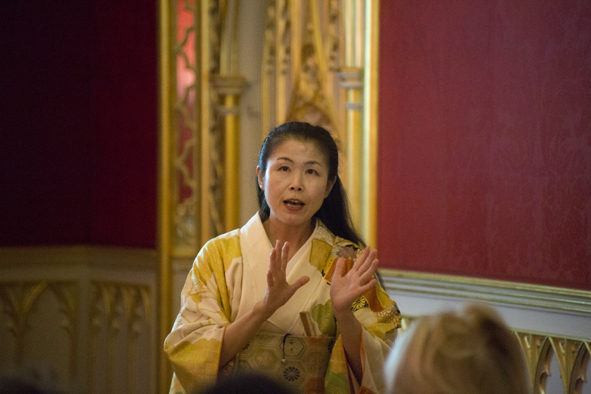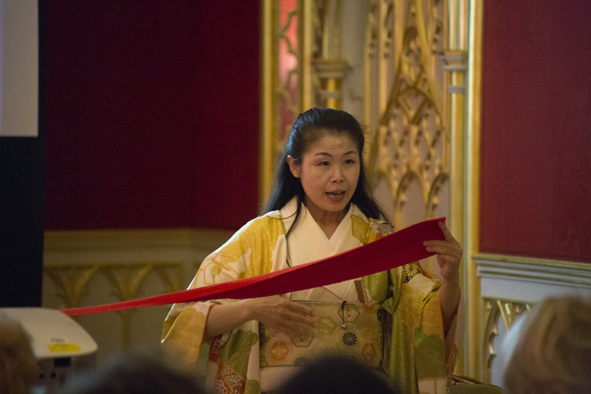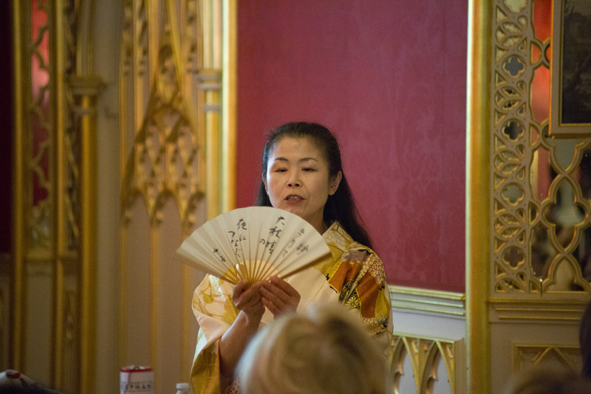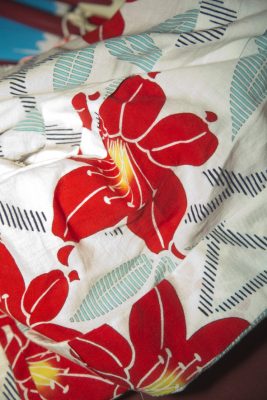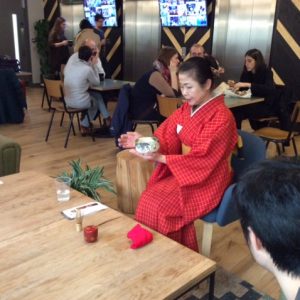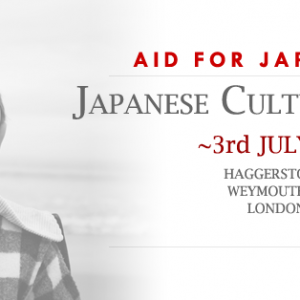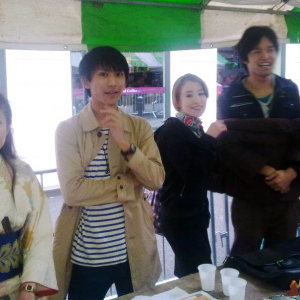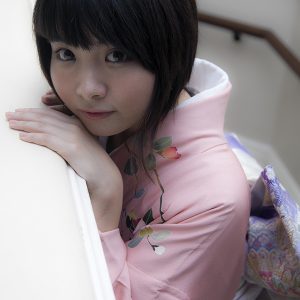Exploring the history and tradition of Japanese clothing.
The Japanese word kimono (着物) translates to “thing to wear” (着 ki “wear” and 物 mono “thing”) but this simple definition is eclipsed by the many different variations and styles that the kimono encompasses.
As a UK-based lecturer and consultant on Japanese culture, Akemi Solloway has helped to promote the traditions of her native country over many years. For an audience that might be unfamiliar with the history and traditions associated with the kimono, her recent presentation at Strawberry Hill House helped to lend some perspective.
As a garment, the kimono employs many styles that can be enjoyed by both men and women – and can also be used for many different occasions. For instance, the yukata (浴衣) is a lighter style of kimono used in summer because it’s made of just one layer of fabric, ideal for the hot weather. The wearing of yukata typically takes place at traditional Japanese festivals, or matsuri (祭り), including fireworks festivals, known as hanabi (花火) as well as obon (お盆) – a festival to celebrate the spirits of the ancestors that takes place in August.
Despite the kimono having largely fallen out of fashion for everyday wear, modern day Japanese people still wear particular styles for special events, such as weddings.
Akemi’s presentation explored this history of the kimono, from its early roots through to the present day, including the fusion of the kimono style in contemporary fashion.
The talk took place at Strawberry Hill House, the Gothic-style villa developed by author Horace Walpole in the 1700s. Noted as an internationally famous example of Georgian Gothic revival architecture, Strawberry Hill underwent a £9 million 2-year restoration project in recent years. It remains a visually captivating venue – and a perfect setting for a talk about fashion and style.
This event was designed to also raise awareness about Aid For Japan, the charity that Akemi started in the wake of the devastating 2011 Japanese earthquake/tsunami. The tragedy left many children orphaned and led to Akemi establishing Aid For Japan as a means of supporting these orphans.
Akemi engaged the audience with an insight into the history of this iconic style of Japanese clothing, which included a series of images that tracked the various styles. There was also an opportunity for attendees to examine some kimono examples that Akemi had brought to the event – and even to try some on!
The event managed to raise over £300 for Aid For Japan and also gave the audience an education on an intriguing aspect of traditional Japanese culture.
All photographs: Timo Hebditch (www.timophotography.com).

